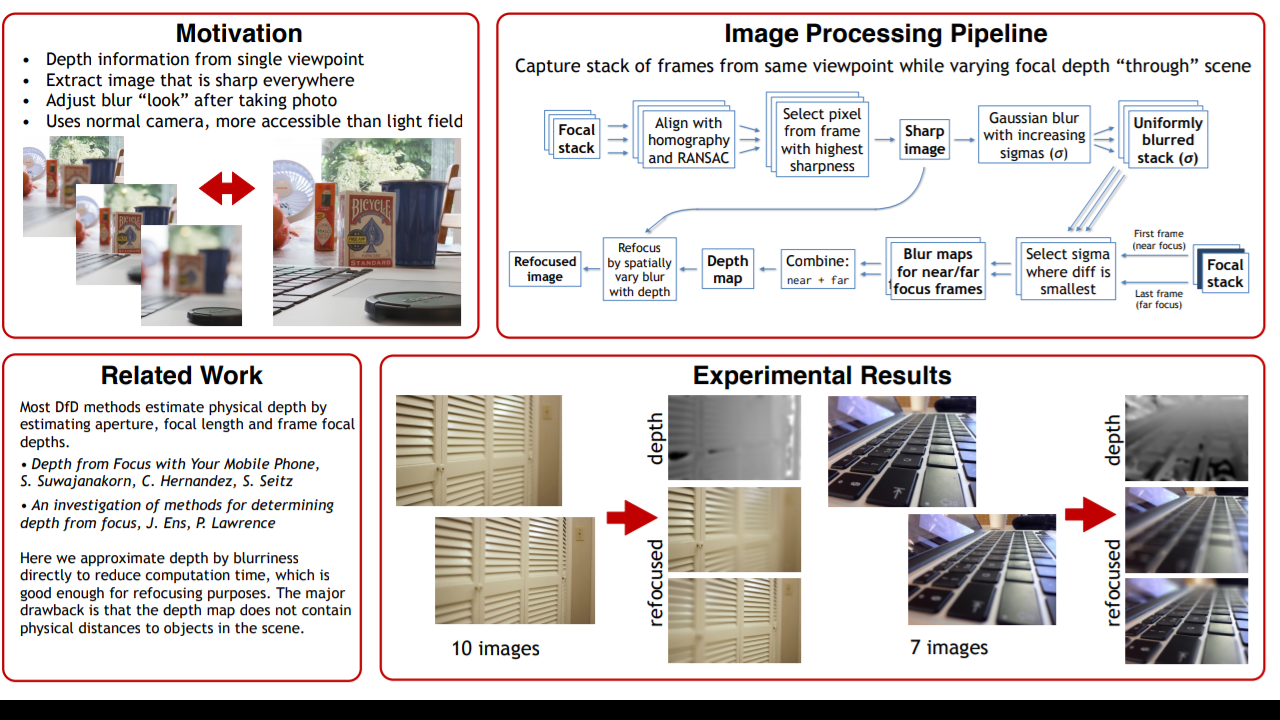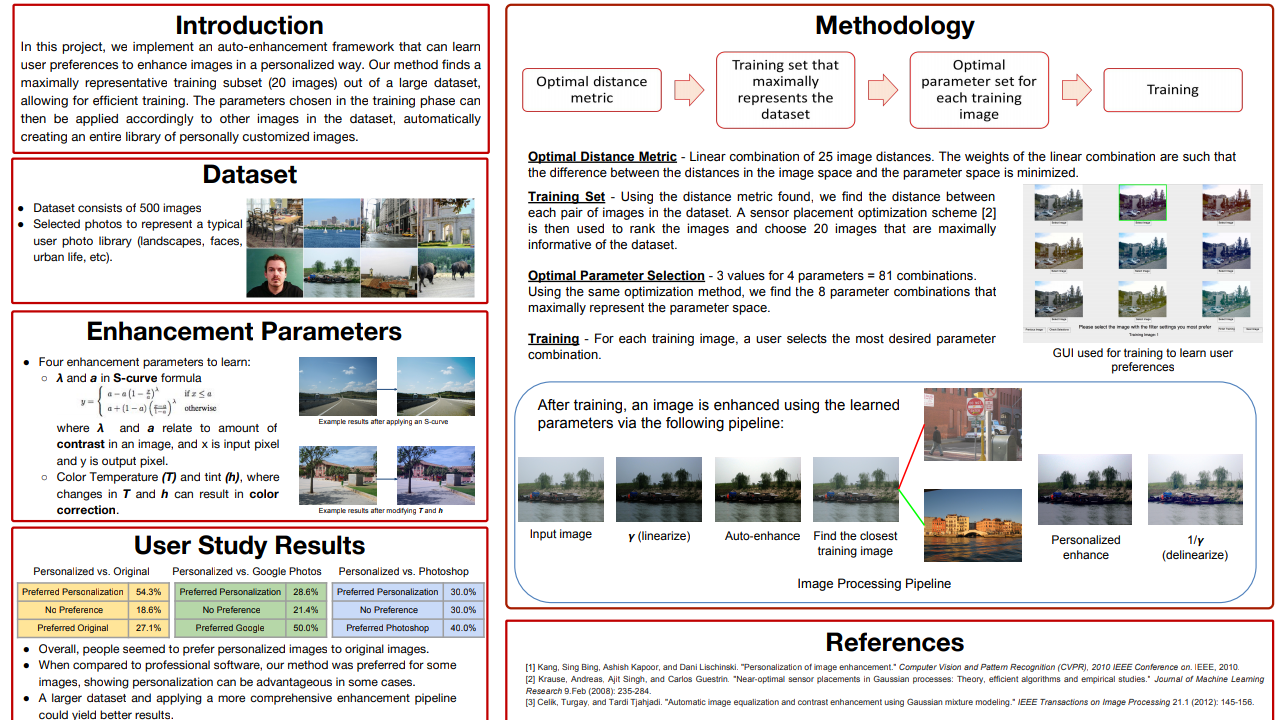Light Field Images for Background Removal

Light Field Images for Background Removal OUTPUT OVERVIEW Standard edge detection or foreground/background separation techniques, such as Otzu’smethod, require color or intensity differences between the background and regions that need tobe separated. For example, green screens are routinely set up as the background in a scene so thatthere is a clear difference in color between the background and foreground.Light filed images, captured in 4D and passively containing depth information for thescene can be used to approximate this effect. Depth estimation in the scene alone could provide a metric to separate the foreground and background, but more sophisticated methods are available.Considering the edge detection from a single image from a single viewpoint and analyzing the depths from the light field around the edges in that image, occluded edges and intensity or color edges can be distinguished. Along with the rest of the depth information this can allow the foreground and b


